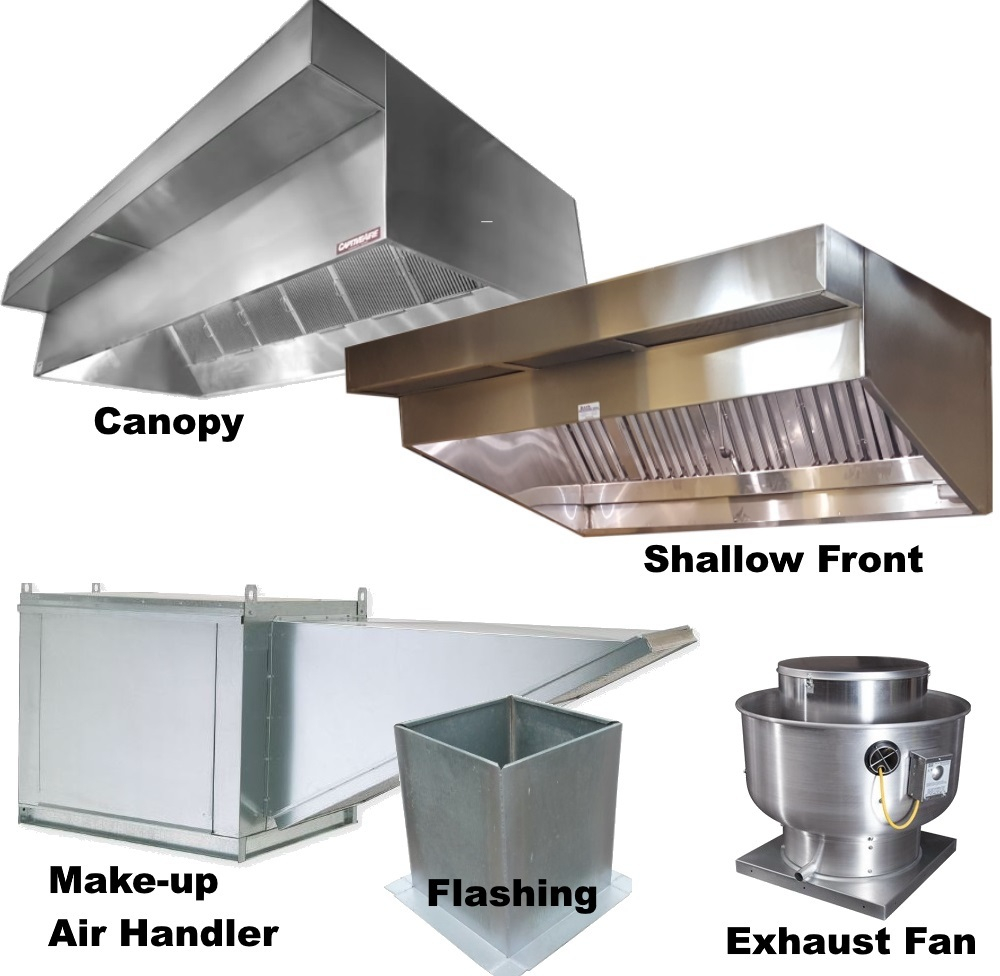Exhaust fans are integral to commercial kitchen ventilation, helping maintain safe, efficient, and comfortable cooking environments by removing smoke, odors, and excess heat. In commercial kitchens, where heavy-duty cooking generates significant air pollutants and grease-laden vapors, a properly designed and maintained exhaust fan system is essential for health, safety, and regulatory compliance.
1. Importance of Exhaust Fans in Commercial Kitchens
-
Air Quality Control: Exhaust fans extract contaminated air, removing smoke, fumes, and strong cooking odors that could impact indoor air quality. They ensure that the kitchen remains a safe, breathable environment.
-
Temperature Regulation: With multiple cooking appliances operating simultaneously, kitchens can quickly become uncomfortably hot. Exhaust fans help to regulate temperature, enhancing kitchen staff comfort and productivity.
-
Grease and Vapor Removal: Cooking produces grease-laden vapors that, if not removed, accumulate on surfaces, making them a fire hazard and difficult to clean. Exhaust fans help in capturing these particles before they settle.
2. Types of Exhaust Fans Used in Commercial Kitchens
-
Upblast Exhaust Fans: Designed for rooftop mounting, these fans direct contaminated air upwards and away from the building, effectively handling grease-laden air.
-
Centrifugal Upblast Fans: A subset of upblast fans, these are often used in high-volume cooking areas because of their ability to manage large amounts of grease particles.
-
Inline Exhaust Fans: Suitable for indoor installations, inline fans are used when rooftop mounting isn’t feasible, often placed within ductwork.
-
Sidewall Exhaust Fans: Mounted on the sidewalls, these fans are beneficial for kitchens with limited rooftop access or other space constraints.
3. Key Features of Effective Exhaust Fans
-
High CFM (Cubic Feet per Minute): The fan’s airflow rate (CFM) determines its ability to move air. High-CFM fans are necessary for handling the heat, smoke, and grease typical in commercial kitchens.
-
Durable Materials: Exhaust fans are exposed to grease, smoke, and heat, requiring materials like galvanized or stainless steel for longevity and resistance to corrosion.
-
Grease Drip Collection: Proper exhaust fans should include grease drip pans or catchers to handle grease-laden air without clogging or creating fire hazards.
-
Ease of Maintenance: Fans that are accessible for cleaning and maintenance ensure system longevity and prevent grease buildup, which can pose safety risks.
4. Design and Installation Considerations
-
Correct Sizing: Determining the fan’s capacity involves calculating the kitchen’s airflow requirements. This calculation depends on the kitchen size, type of cooking, and the appliances used.
-
Ducting Design: Efficient ducting minimizes air resistance, allowing the fan to work optimally. Grease ducts should slope towards the fan to allow grease to flow to collection points.
-
Compliance with Local Codes: Commercial kitchen exhaust fans must adhere to local safety and health regulations. Codes often specify exhaust rates, fan types, and placement requirements.
-
Fire Safety Features: Many commercial kitchens install exhaust fans with automatic shutdowns and fire suppression systems to mitigate risks in case of a grease fire.
5. Maintenance of Commercial Kitchen Exhaust Fans
-
Regular Cleaning: Given the accumulation of grease and particles, fans should be cleaned regularly to maintain performance and prevent fire hazards.
-
Motor Inspection and Lubrication: The motor, as the fan’s core component, should be routinely inspected and lubricated to prevent malfunctions.
-
Filter and Hood Cleaning: Clean filters and hoods optimize airflow, keeping the fan from overworking and prolonging its lifespan.
-
Professional Inspections: Many regulations require periodic inspections by certified professionals to ensure that the ventilation system remains effective and compliant with fire codes.
6. Energy Efficiency and Cost Considerations
-
Variable Speed Controls: Some exhaust fans offer variable speed options, allowing the fan to adjust to cooking demand, conserving energy during non-peak hours.
-
Heat Recovery Systems: Advanced systems can recover heat from exhaust air, reducing heating costs and improving overall energy efficiency in the building.
-
Cost of Maintenance: Regular maintenance is an ongoing cost but prevents more expensive repairs or replacements caused by grease and heat damage.
7. The Role of Exhaust Fans in Meeting Health and Safety Regulations
-
OSHA Requirements: The Occupational Safety and Health Administration (OSHA) mandates adequate ventilation to protect workers from air contaminants, particularly in environments like kitchens.
-
NFPA Standards: The National Fire Protection Association (NFPA) has standards specific to commercial kitchens, including guidelines on exhaust fan installation, maintenance, and fire suppression integration.
-
Local Building Codes: Many municipalities have specific codes for ventilation, including fan capacity and design, that must be followed to pass inspections.
Exhaust fans in commercial kitchens are essential for maintaining safe air quality, efficient temperature control, and regulatory compliance. Selecting and maintaining the right exhaust fan type helps kitchen operations run smoothly and enhances safety for all staff.

